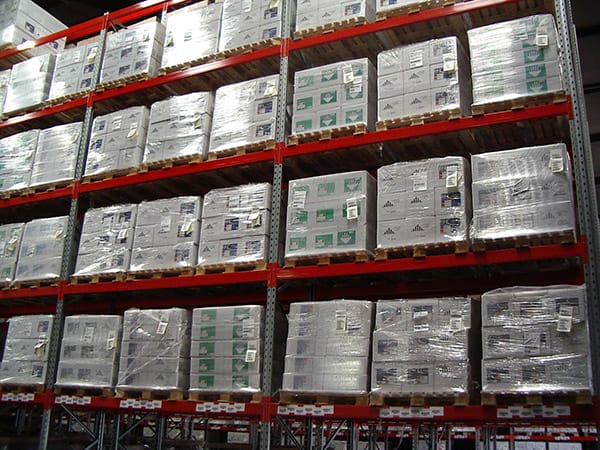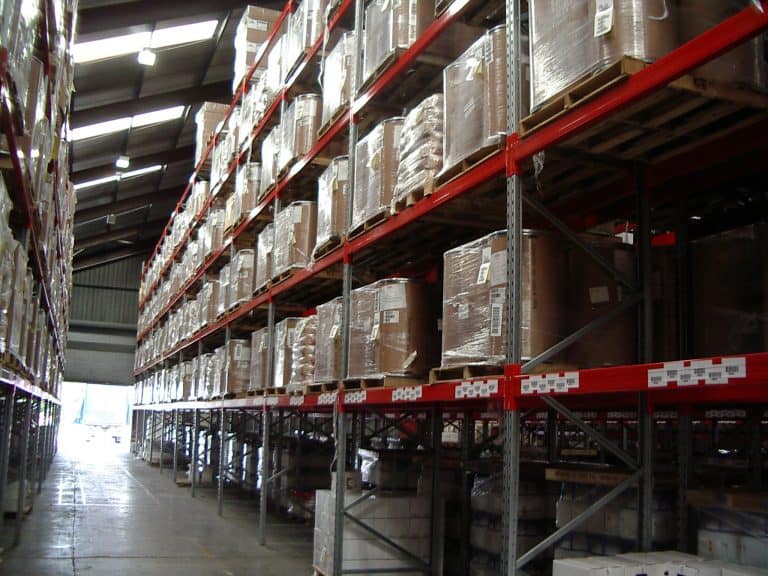CONVENTIONAL AISLE PALLET RACKING
Home » Racking Product Range » Pallet Racking » Conventional Aisle Pallet Racking
Stakapal Pallet Racking is without exception our most widely used storage system for palletised loads. Conventional racking system such as this typically comprises of double sided and single sided runs of racking, separated by aisles which are dimensioned to suit the customers counter balance fork lift trucks or the more space efficient reach trucks.
Stakapal Conventional Pallet Racking is the most commonly used system as it offers the flexibility to be easily adapted to meet your exact requirements.
What is Conventional Aisle Adjustable Pallet Racking?
The construction of Conventional Pallet Racking typically comprises of double sided and single sided runs of racking, separated by aisles which are dimensioned to suit the customers counter balance fork lift trucks or the more space efficient reach trucks. The full range is manufactured in the UK at our purpose-built factory in Cannock, Staffordshire.
Stakapal 2000 Series Conventional Pallet Racking is easily adjustable to accommodate changing stock profiles whilst ensuring direct access to individual pallets.
What are the features & benefits of Conventional Aisle Pallet Racks?
- 100% selectivity (access to every pallet)
- Complete flexibility to suit any pallet type/size and maximise space available
- Adjustable on a 75mm pitch
- High operating speed for high throughput
- Utilises commercially cost effective and easily sourced handling equipment
- Back up handling equipment usually easily sourced on rental market in event of a breakdown
Racking Variations We Offer
Top quality durable powder coated finish for internal applications
Hot dipped Galvanised finish for external applications and harsh environments such as chill and cold stores
Timber Decks

Stakapal are full members of SEMA (Storage Equipment Manufacturers Association), with our installation and inspection teams fully SARI (SEMA Approved Rack Inspector), and SEIRS (Storage Equipment Installers Registration Scheme) registered.



